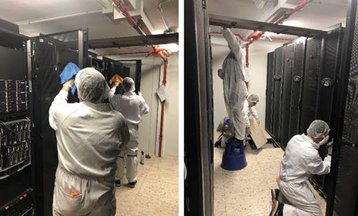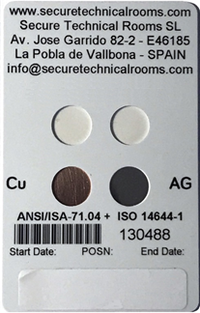As a critical environment. a data center should follow some very specific guidelines and cleaning procedures.
Technical Cleaning is based on minimizing the number of particles in suspension as indicated in the standard ISO 14644-1 and ANSI / ISA 71.04 - which was defined with respect to corrosion levels. The best practices in the industry in cleaning data centers are summarized in the specific Contamination Control Paper in ASHRAE's 2011 Gaseous and Particulate Contamination Guidelines for Data Centers.
Cleaning in a Covid-19 world
In 2020 all this has changed due to the Covid-19 pandemic. Now, the usual processes of cleaning should be supplemented by specific procedures of disinfection and sanitation in the Installations to minimize pathogens and viruses in the environment. New processes for data centers have been set out in documents including the following:
- The Community of Madrid in Spain published a general article on disinfection of surfaces and spaces with coronavirus.
- Specifically for Data Centers, Uptime Institute published its guide COVID-19: Minimizing critical facility
- ASHRAE meanwhile has also prepared a list of related resources.
Notice that a data center is an air-conditioned environment with constant air movement. Viruses can remain in air conditioning filters, grids and IT equipment themselves. In another view, the facility is a closed room whose only access points are the entry doors, where the technicians introduce pathogens that they carry with them into their daily operations. According to 3M, 80 percent of dust and dirt in the critical area is introduced by the feet of technicians entering the rooms.
Also, you cannot make a proper disinfection without prior cleaning. If there is some dirt and the area must be sanitized, it will not be easy access to the areas where dust exists - and it is possible that the virus "hide" within the motes.
New processes for technical cleaning should include:
- Standard Technical Cleaning according to the standard ISO 14644 class 8, to 0.3 microns HEPA vacuum, backed by measurement of the purity of the air with particle counters.
- Disinfecting all surfaces with products approved by the Local Ministry of Health, i.e, in Spain: Annex 1: "Disinfectants with viricidal action in Spain"
- Disinfection with UV-C of the parts that are touched by the technicians in the room, as door handles, switches, etc.
- General ozone disinfection, taking special care to respect the maximum recommended levels of 0.05 ppm by WHO, Directive 92/72 / EEC "Evaluation Criteria for Ozone Air Pollution" and local laws like RD 1494/1995 transposed to the European Directive Spanish legal system (BOE 230 of 09/26/95).
- Contamination Control Mats on the doors of the rooms, which also incorporate antibacterial agents such as those used in hospitals, pharmaceutical laboratories, etc.
- Installation of Contamination Control Cards that monitor the levels of environmental contamination and corrosion during the following 12 months.
- Ozone disinfection works by altering the molecular structure of certain water-borne microorganisms such as viruses or bacteria. It is feasible in data centers because it operates where there is high humidity, and in a wide temperature range, without creating hazardous waste to the environment
IBactericide impregnated in the material of the mats provides protection against microbes in the soles of the technicians's shoes when they enter the critical rooms, giving effective protection for the four to five year life of the units.
Analysis of corrosion and level of dirt
In addition to the analysis of suspended particles, the specific regulations from AHSRAE regulate the level of maximum permissible corrosion on copper and silver:
- Copper reactivity rate of less than 300 Å per month
- Silver reactivity rate of less than 200 Å per month
A pair of corrosion meters must be installed per room every year, to measure and control the level of corrosion of the data center rooms under ANSI / ISA-71.04, which includes a pair of reports after 6 months taking environmental samples. These meters also control the level of particulate dust suspended in the air under ISO 14644-1.




